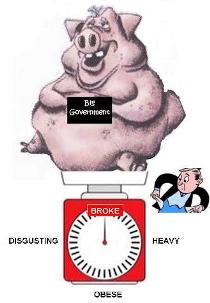by Ed Mattson
Veterans Day has come and gone. The Thanksgiving weekend has drawn to a close. It’s now time to get back to sharing the good and bad news of the day and how it affects veterans and active-duty military.
Today, Monday starts off my New Year, because as I wrote Friday, I believe it is appropriate to begin ending the year on Thanksgiving not on New Year’s Eve. As I pointed out, if for no other reason, we should be thankful as a nation that we got through another year without a total fiscal collapse caused by out-of-control government spending; we made headway in 2011 in the battle to get the Bluewater Navy recognized as being eligible for Agent Orange Benefits; many of our troops are homeward bound; and Veterans pensions have been included, along with Social Security recipients, in the Cost-of-Living-Allowance (COLA) increase.

But as we head off into a new year of reality, the United States and other nations still seem hell-bent on keeping the world on the brink of confrontation. World military expenditures are estimated to have been $1.6 trillion in 2010, which is a 1.3 per cent increase over military expenditures over what was spent in 2008 and 50 per cent more than 2001. For those mathematically challenged, global military spending amounts to $236 for each person in a world, where nearly ½ of the people live on less than $750 per year.
At a time when world economies are crumbling under the weight of social and entitlement spending, placing Greece, Spain, Italy, and Portugal on the brink of bankruptcy, the insanity of politicians to continue spending more and more on the tools of war makes it almost impossible to think we will not see more and more chaos. It’s the old story from my economics class regarding “guns or butter” meaning governments make choices on how to spend taxpayer money, but if they can’t stop the waste and corruption, they sure as heck better spend the money on guns, if for no other reason than to protect themselves from we, the taxpayer!
Even though our “super committee” of 12 hand-picked Senators and Congressmen, were selected to make budget compromises to begin balancing the teetering US economy’s budget, anyone with an ounce of common sense knew the entire idea was destined for failure. As I wrote about several month ago, Congress and the White House didn’t have the balls to pony up to the bar and make hard choices, so they dumped the job off on the shoulders of a bunch of millionaire legislators, many of whom were the cause of the problem in the first place. It was all “showmanship” pure and simple, so they could blame each other when election time comes.
Can anyone believe, with all the waste and pork at all levels of government, that each department cannot find a way to eliminate 4-5% from their frivolous spending every year. 90% of all the families in America have had to take those steps just to survive today’s economy. We have legislators flying all over the world on so-called important “jaunts and fact-finding missions”; government office meetings at high priced hotels, dining on coffee breaks with $16 muffins; and we have the “missing $25 billion” the US Treasury simply cannot find.
I think the Washington is totally out of control and so lost in CYA-politics, they are totally worthless. They think Americans are stupid and that we are not catching on to their ineptness.
Buried in the Department of the Treasury’s 2003 Financial Report of the United States Government is a short section titled “Unreconciled Transactions Affecting the Change in Net Position,” which explains that these unreconciled transactions are funds for which auditors cannot account: The government knows that $25 billion was spent by someone, somewhere, on something, but auditors do not know who spent it, where it was spent, only that it was spent. They say it’s the failure of federal agencies to report their expenditures adequately, but that locating the money is a priority…yeah, right….since 2003!
Auditing the Federal government would be for an accountant what it is for a “kid in a candy store”. It wouldn’t be hard to find misappropriations at every level and in every nook and cranny where the federal government’s shadow is cast: Federal education grants , Immigration (padding expense accounts), and 102 wasteful ways the government is spending money from the stimulus package. There’s no end to it.

Government’s use of taxpayer dollars is like screeching chalk on a blackboard and should make everyone want to clean out the sewer of corruption inside the Beltway. A recent audit revealed that between 1997 and 2003, our “sacred Defense Department” which seems willing to let Congress play fast and loose with Veteran’s benefits, purchased and then left unused approximately 270,000 commercial airline tickets at a total cost of $100 million. Even worse, the Pentagon never bothered to get a refund for these fully refundable tickets.
The GAO blamed a system that relied on department personnel to notify the travel office when purchased tickets went unused. That doesn’t seem too unreasonable to me, but all that money could have picked up the tab for about 17 new Abram tanks. It was also found that the government double paid for 27,000 DOD airline tickets , reimbursing on expense account tickets they paid for directly.
When I suggest that there is probably more than 20% waste in government spending, I don’t mean, just “sloppy accounting”. I mean waste in the form of theft, embezzlement, overspending, encouraging wasteful spending to maintain department budgets (spend it or lose it), and on and on, and on.
The use of federal credit cards was suppose to save the taxpayer money by eliminating the cumbersome task of putting everything out under the bid process but a recent audit revealed that employees of the Department of Agriculture (USDA) diverted millions of dollars to personal purchases through their government-issued credit cards. Sampling 300 employees’ purchases over just six months, investigators estimated that 15 percent of the employees abused their government credit cards to the tune of $5.8 million purchasing rock concert tickets, tattoos, lingerie, bartender school tuition, car payments, and cash advances. And talk about lack of oversight, there are 55,000 USDA credit cards in circulation today, including 1,549 that are still held by people who no longer work at the USDA.
The abuse doesn’t stop at the Agriculture Department either. The Department of Defense has uncovered its own credit card scandal. Over one recent 18-month period, Air Force and Navy personnel used government-funded credit cards to charge at least $102,400 for admission to entertainment events, $48,250 for gambling, $69,300 for cruises, and $73,950 for exotic dance clubs and prostitutes. Yup…these are the same folks that put Veteran’s benefits on the negotiating table during the budget cut hearings.
We have kids down living in tents on Wall Street, picketing the government to forgive their student loans. We have the Obama Administration wanting to take total control over the entire school loan process, and yet they do not have the business acumen to operate a lemonade stand. As a matter of fact, somebody please tell me ANY department of government at ANY level, that functions fiscally responsible, is a solid investment of taxpayer money, and is operated with the same due diligence, as the private sector. Yet we see these misguided Occupying Crowds, want us to put in jail “those abusers of capitalism” (big financial banks and institutions), that are operating under the current laws on the books. If the laws are bad, change them, but private sector waste is most often caught and punished while nobody is held accountable in government.
Don’t believe me? “In 2002, the Department of Education received an application to certify the student loan participation of the Y’Hica Institute in London, England. After approving the certification, the department received and approved student loan applications from three Y’Hica students and disbursed $55,000, but they overlooked one small problem…Neither the Y’Hica Institute nor the three students who received the $55,000 even existed”.
The fictitious college and students were created (on paper) by congressional investigators to test the Department of Education’s verification procedures. All of the documents were faked, right down to naming one of the fictional loan student applicants “Susan M. Collins,” after the Senator requesting the investigation. These are no innocent mistakes. It shows that our government is rife with idiots and dolts!
Such carelessness helps to explain why federal student loan programs routinely receive poor management reviews from government auditors. At last count, $21.8 billion worth of student loans are in default, and too many cases of fraud are left undetected. Tracking students across federal programs, verifying loan application data with IRS income data, and implementing controls to prevent the disbursement of loans to fraudulent applicants could save taxpayers billions of dollars.
This is the same government Mr. Obama wants to continue in its quest to take over all segments which are now operated by the private sector, an/or to create regulations, permitting, licensing, and oversight to restrict our free enterprise system. Our government is quickly reaching the point where it will either totally control 50% of the US commerce, or be in a position where those responsible for America’s success, will simply give up. As it is now, if the government doesn’t own it, they want to tax it out of business to satisfy their thirst for power.

Following his service in the Marine Corps Ed Mattson built a diverse career in business in both sales/marketing and management. He is a medical research specialist and published author. His latest book is Down on Main Street: Searching for American Exceptionalism
Ed is currently Development Director of the National Guard Bureau of International Affairs-State Partnership Program, Fundraising Coordinator for the Warrior2Citizen Project, and Managing Partner of Center-Point Consultants in North Carolina.
Mr. Mattson is a noted speaker and has addressed more than 3000 audiences in 42 states and 5 foreign countries. He has been awarded the Order of the Sword by American Cancer Society, is a Rotarian Paul Harris Fellow and appeared on more than 15 radio and television talk-shows.
ATTENTION READERS
We See The World From All Sides and Want YOU To Be Fully InformedIn fact, intentional disinformation is a disgraceful scourge in media today. So to assuage any possible errant incorrect information posted herein, we strongly encourage you to seek corroboration from other non-VT sources before forming an educated opinion.
About VT - Policies & Disclosures - Comment Policy




